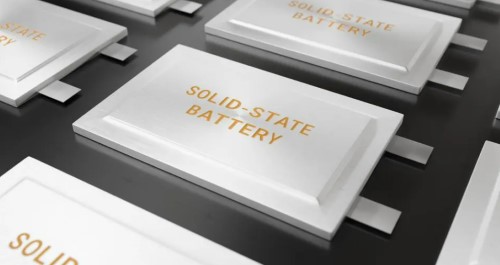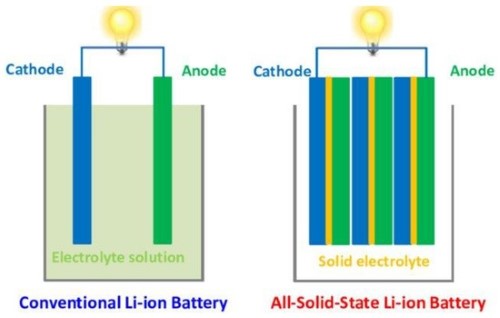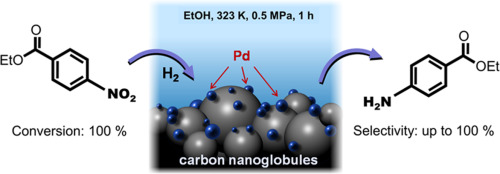Solid-State Batteries: The Future of Electric Vehicle Energy Storage
Introduction
In the ever-evolving landscape of electric mobility, the quest for safer, more efficient, and environmentally friendly energy storage solutions has led to the emergence of solid-state batteries. This article is going to explore how such batteries offer a tantalizing glimpse into the future of electric vehicle (EV) energy storage. Hope that you can have a better understanding of the advantages and limits of solid-state batteries.
 [1]
[1]
Figure 1. Solid-State Batteries
Understanding Solid-State Batteries
Solid-state batteries represent a pioneering approach to energy storage. They replace the traditional liquid or gel electrolyte found in lithium-ion (Li-ion) batteries with a solid electrolyte., using solid materials for most of their internal components, including the electrolyte, electrodes, and separators. Here's a closer look:
 [2]
[2]
Figure 2. Solid-State Batteries vs. Lithium-Ion (Li-ion) Batteries
Solid Electrolyte: The most distinctive component of a solid-state battery, the solid electrolyte, is typically made from solid materials like ceramics, polymers, or glass, offering high ionic conductivity. This solid electrolyte facilitates the movement of lithium ions (Li+) between the cathode and anode during charge and discharge cycles.
Cathode and Anode: Similar in function to traditional Li-ion battery, the cathode contains lithium-containing compounds like lithium cobalt oxide (LiCoO2) or lithium iron phosphate (LiFePO4), and so on. The anode, analogous to its Li-ion counterpart, is typically made from materials like lithium metal, lithium titanate (Li4Ti5O12), or other lithium-intercalating materials.
Advantages of Solid-State Batteries
Solid-state batteries are poised to revolutionize electric vehicle (EV) energy storage, offering significant advantages over traditional lithium-ion (Li-ion) batteries:
1. Safety: Solid-state batteries are inherently safer than Li-ion batteries because they replace the liquid electrolyte with a solid one, eliminateing the risk of thermal runaway and associated hazards.
2. High Energy Density: These batteries have the potential to offer higher energy density, storing more energy in a smaller, lighter package, thereby extending t EV driving ranges without increasing size or weight.
3. Fast Charging: These batteries can support ultra-fast charging, reducing charging times to minutes rather than hours. This improved charging speed makes EVs more convenient and competitive with internal combustion engine vehicles.
4. Longer Lifespan: These batteries have the potential for longer cycle life, meaning they can endure more charge and discharge cycles before needing replacement. This can lead to reduced maintenance costs and increased overall vehicle longevity.
5. Wide Temperature Range: Solid-state batteries can operate efficiently in a broader temperature range compared to Li-ion batteries. This makes them suitable for extreme climates, ensuring consistent performance in both hot and cold conditions.
6. Reduced Environmental Impact: Solid-state batteries often use more sustainable materials, such as solid electrolytes and electrodes, thus reducing the environmental impact associated with battery production and disposal.
7. Compatibility with Solid-State Electronics: The solid-state nature of these batteries aligns well with the development of solid-state electronics, potentially leading to integrated, more efficient systems in EVs.
While solid-state batteries offer numerous advantages, they are still in the research and development phase, with a few challenges to overcome, including manufacturing scalability and cost reduction. However, several automakers and battery manufacturers are actively investing in solid-state battery technology, and commercialization efforts are underway.
Conclusion
In summary, solid-state batteries offer a brighter and safer future for energy storage in electric vehicles (EVs) with their remarkable safety features, enhanced energy density, rapid charging capabilities, extended lifespan, and adaptability to diverse temperature ranges. These advantages not only promise to redefine the electric driving experience but also contribute to reducing the environmental footprint of EVs through the use of more sustainable materials.
Stanford Advanced Materials (SAM), a leading supplier in the field of advanced EV batteries, is at the forefront of driving this transformative change. With a commitment to excellence, SAM not only offers competitive prices but also provides tailor-made solutions to meet your specific requirements. If you are interested in exploring our offerings or have any inquiries, please do not hesitate to get in touch with us.
Reference:
[1] Winton, N. (2021, November 28). Solid-State Batteries Promise Electric Car Popularity Boost, But Technical Mountains Await. Forbes. Retrieved September 20, 2023, from https://www.forbes.com/sites/neilwinton/2021/11/28/solid-state-batteries-promise-electric-car-popularity-boost-but-technical-mountains-await/?sh=1ad7615632fa
[2] Majid, M.F.; Mohd Zaid, H.F.; Kait, C.F.; Ahmad, A.; Jumbri, K. Ionic Liquid@Metal-Organic Framework as a Solid Electrolyte in a Lithium-Ion Battery: Current Performance and Perspective at Molecular Level. Nanomaterials 2022, 12, 1076. https://doi.org/10.3390/nano12071076



